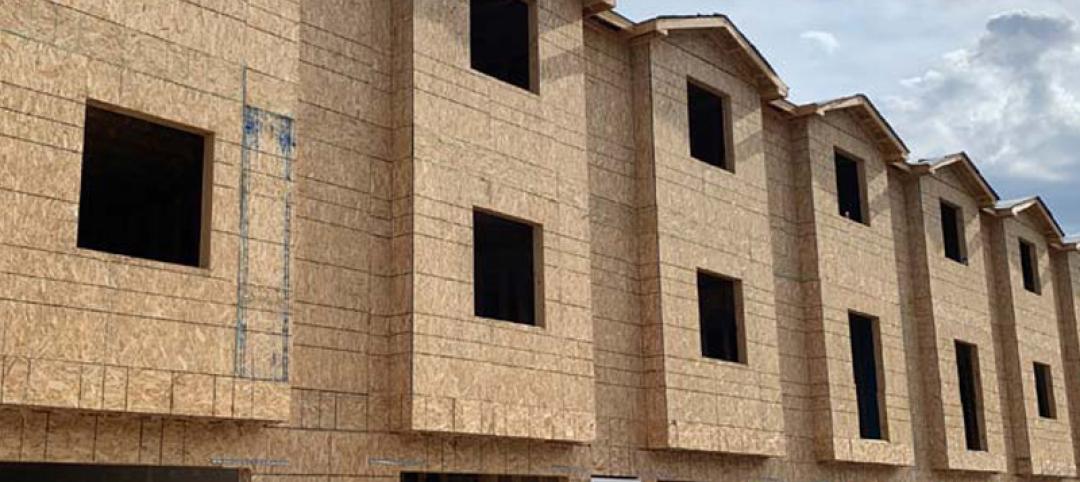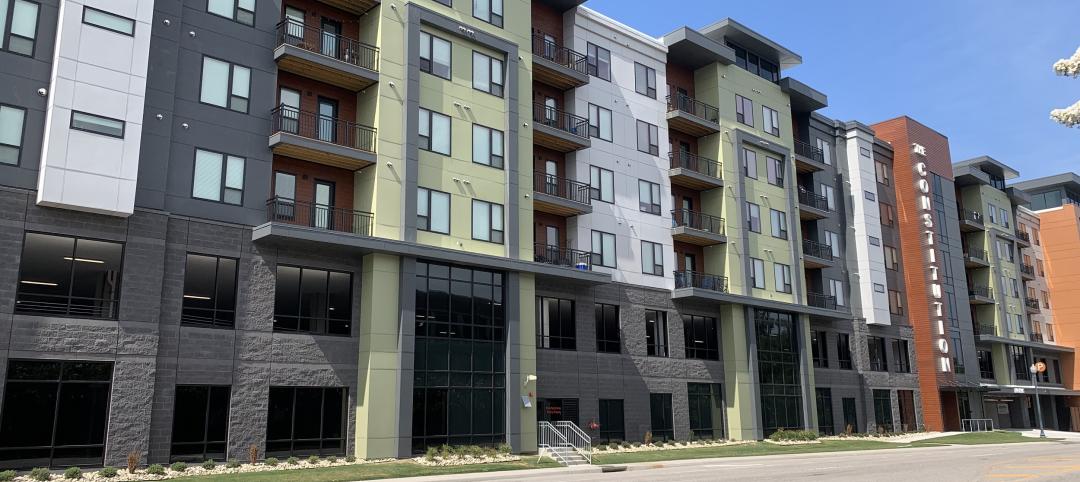Natural disasters that have devastated Puerto Rico over the past few years—at least 160,000 homes were destroyed by Hurricane Maria in September 2017, and another 30,000 were damaged by Hurricane Dorian last August, to say nothing of the damage caused by a 6.4-magnitude earthquake that shook the island last month—exposed the longstanding deficiencies in the commonwealth’s construction practices.
Close to half of Puerto Rico’s housing has been built—and continues to be built—“informally,” meaning that owners didn’t get permits, didn’t hire a licensed architect, and in all likelihood didn’t build to code.
With the island in need of between 60,000 and 90,000 new housing units by 2023, the question before Puerto Rico’s leaders and citizens is whether rebuilding and renovation will take safety and resilience more seriously.
“The problem is not the codes, which are equal or similar to what’s followed in the U.S.,” explains Ricardo Alvarez-Diaz, founder and chairman of Alvarez-Diaz & Villalón, the island’s largest architecture firm. He is also a member of the Construction Council of Puerto Rico. “The problem is the implementation of the codes and their enforcement.”
He says more rigorous enforcement will require a change in cultural mindset among the island’s residents for whom “informal” construction has been a way of life, and a girding of political will among politicians who too often turn a blind eye to illegal construction every election cycle.
The situation in Puerto Rico is complicated by many factors, not the least of which being that the laws mandate that licensed architects and contractors take full responsibility for code enforcement. But because Puerto Rican contractors don’t need licenses to operate, the onus of code enforcement falls squarely on the architects, whose liability insurance premiums are second only to doctors', says Alvarez-Diaz.
He notes, however, that there’s been a “big push” to require contractors to be licensed, which he believes could happen later this year.
Homeownership in Puerto Rico, at around 70%, is higher than in the U.S. But that ownership rate, says Alvarez-Diaz, is a double-edged sword because owners that have paid off their mortgages typically don’t carry insurance, or are less educated about the benefits of hiring professionals for rebuilding or remodeling.
What’s changing the island’s attitudes about following building codes, however, have been mandates by the Federal Emergency Management Administration (FEMA), and the U.S. Department of Housing and Urban Development (HUD) that federal funding for rebuilding is contingent on more rigorous code enforcement.
This is nothing new: FEMA and HUD imposed similar requirements after Hurricane Andrew wiped out parts of Florida in 1992 and exposed shoddy construction and, in some markets, nonexistent code enforcement.
Puerto Rico desperately needs the U.S. government’s money. A few years back the island’s Governor’s office estimated that rebuilding what Hurricane Maria destroyed would cost at least $31 billion, well beyond the means of a financially precarious commonwealth whose poverty rate hovers around 44%.
Currently, the government evaluates properties to determine whether they are worth rebuilding or if their residents need to relocate. And one of the criteria for those determinations is whether the building is in an existing flood plain. “FEMA has made it clear, as has the government, about not wanting to rebuild in flood plains,” says Alvarez-Diaz. HUD’s CDBG-DR funding allow for building above flood plain levels, but the ultimate decision lies with Puerto Rico’s Housing Authority.
Alvarez-Diaz cites estimates that more than 73,000 housing units, out of the 250,000 affected by recent storms, might need to be moved to higher ground, and that only about 35,000 units are in good enough condition to be rebuilt or elevated.
So what’s the alternative? One solution could be urban densification. Alvarez-Diaz says that only recently have Puerto Ricans become more receptive to renting as opposed to owning. That change of heart might also be motivated by the government issuing Section 8 vouchers that can be used for rental housing.
Bayshore Villas is a mixed-use complex that offers 170 rental apartments that range in size from 600 to 1400 sf.
For the past several years, Alvarez-Diaz’s firm has been trying to bring more affordable rental housing to the island. Its first big project was Renaissance Square, a 170-unit building that is Puerto Rico’s first mixed-income public housing development, and the island’s first Energy Star-rated project. Renaissance Square was approved in 2014, started in 2017, delayed by the storms, and completed last year.
Alvarez-Diaz & Villalón has two similar projects on the island. Bayshore Villas, located on the former Puerta de Tierra public housing project near Old San Juan, offers 174 rental units ranging from 600 to 1,400 sf, more than 5,800 sf of commercial space, and 6,000 sf for community and administrative uses. Last May, construction began on the Jose Gautier Benitez development in Caguas, P.R. This 21-acre development is divided into six residential blocks, and will include 438 one- and two-bedroom apartments as well as a five-story elderly housing facility. This building should be completed next year.
Alvarez-Diaz says the success of Renaissance Square has gotten his firm work in Texas, Florida, and the Virgin Islands.
Related Stories
Multifamily Housing | Dec 6, 2022
Austin's new 80-story multifamily tower will be the tallest building in Texas
Recently announced plans for Wilson Tower, a high-rise multifamily building in downtown Austin, Texas, indicate that it will be the state’s tallest building when completed. The 80-floor structure will rise 1,035 feet in height at 410 East 5th Street, close to the 6th Street Entertainment District, Austin Convention Center, and a new downtown light rail station.
Multifamily Housing | Dec 6, 2022
Miami-Dade County will allow accessory dwelling units
Commissioners in Miami-Dade County, Fla., recently voted to allow many single-family homeowners to rent out accessory dwelling units on their property. Many homeowners will be allowed to rent out garages, separate quarters, or detached backyard apartments if they meet certain standards including for lot size and parking.
Multifamily Housing | Dec 6, 2022
Support for multifamily rent control legislation grows as metros face big rent hikes
Steep rent increases during the pandemic recovery have spurred support for rent control legislation in several areas of the country.
Mixed-Use | Dec 6, 2022
Houston developer plans to convert Kevin Roche-designed ConocoPhillips HQ to mixed-use destination
Houston-based Midway, a real estate investment, development, and management firm, plans to redevelop the former ConocoPhillips corporate headquarters site into a mixed-use destination called Watermark District at Woodcreek.
Multifamily Housing | Nov 29, 2022
Number of office-to-apartment conversion projects has jumped since start of pandemic
As remote work rose and demand for office space declined since the start of the Covid-19 pandemic, developers have found converting some offices to residential use to be an attractive option. Apartment conversions rose 25% in the two years since the start of the pandemic, with 28,000 new units converted from other property types, according to a report from RentCafe.
Multifamily Housing | Nov 22, 2022
10 compelling multifamily developments debut in 2022
A smart home tech-focused apartment complex in North Phoenix, Ariz., and a factory conversion to lofts in St. Louis highlight the notable multifamily developments to debut recently.
Sponsored | Multifamily Housing | Nov 16, 2022
Commercial Framer Training: Back to Basics for Big Buildings
A glimpse into the most common wood construction framing errors, and how to avoid them, in today’s nonresidential construction industry.
Legislation | Nov 13, 2022
U.S. voters pass numerous affordable housing measures
Voters in many U.S. jurisdictions passed housing measures Nov. 8 that will collectively set aside billions of dollars in new funding to create more affordable housing and provide protections for renters.
BAS and Security | Oct 19, 2022
The biggest cybersecurity threats in commercial real estate, and how to mitigate them
Coleman Wolf, Senior Security Systems Consultant with global engineering firm ESD, outlines the top-three cybersecurity threats to commercial and institutional building owners and property managers, and offers advice on how to deter and defend against hackers.

















